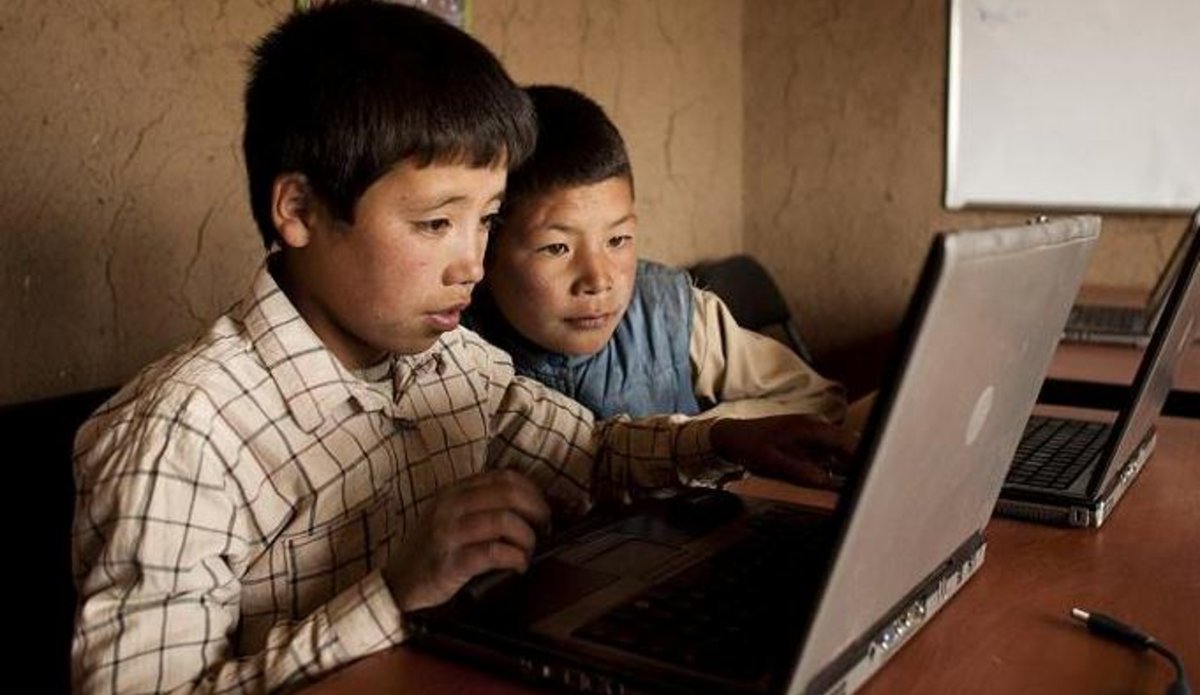UNDP-supported micro-hydro lights up homes and lives in Afghanistan
KABUL - Eleven-year-old Mohamed Nasim, who is in sixth grade, wakes up at 5:30 every morning to take computer lessons in a makeshift classroom here in Borghaso village, Bamiyan Province, northwest of Kabul. He draws a house in Microsoft paint, colors it, and types his name in the corner as his young teacher watches over his shoulders. The back of Mohamed’s hands are dried and cracked by the cold weather.
Outside, just in the distance, farmers tend to their wheat, trying to bring in the harvest in preparation for the harsh winter ahead. The mountain peaks in the distance already gleam with snow.
Nasim is one of 46 people – 28 children and 18 adults – benefiting from this computer class. The freshly built room was donated by a local elder, but what makes such initiatives possible here in Bamiyan province, where there is no power grid, is the use of micro hydroelectric power plants.
Afghanistan has one of the lowest per capita rates of electricity consumption in the world. But though imported electricity has increased and provides more than half of the country’s power, it does not reach Bamiyan province.
As a result, UNDP has funded the construction of 18 micro hydroelectic power plants in Bamiyan province, with a budget of US$ 997,000 generously provided in part by the Governments of Denmark, Japan, The Netherlands and Norway and the European Union.
These plants are not only bringing tangible improvements to the lives of the people who now depend on them for access to electricity, they are creating jobs for locals, improving relationships with the Government of Afghanistan and providing environmentally-friendly, and thus sustainable, sources of energy. And in a country where many people depend on kerosene oil, wood and cow dung for heat and lighting, they offer a clean and healthy alternative, eliminating indoor smoke. According to the World Bank, nearly 2 million people die prematurely from illness attributable to indoor air pollution from household solid fuel use.
Take the power plant in Borghaso. The local shura – a traditional assembly of tribal elders and religious scholars – took eight months to build it, at a total cost of US$ 62,064. About 160 families, or 1,120 people, benefit from the 12.7 kw of electricity generated by the plant. Putting the shuras in charge of the projects ensures local ownership, and is the first step in guaranteeing that the plants will actually be useful and thus maintained by the communities who build them.
The shuras not only oversee and coordinate the construction, but they also put in place a tariff system after the plants open, ensuring that they pay for themselves. In Borghaso, the Shura charges a monthly rate of about 90 cents per light bulb for electricity and US$ 1.70 per television set. The tariff is collected by the Shura cashier. The two electricians manning the station – who were trained in the provincial capital through a 15-day UNDP workshop – are paid a monthly salary by the Shura, from the collected tariff. The rest of the money from the tariffs is put in savings to be used if the power plant malfunctions at any point in the future.
While electricity is now providing a cheap substitute to oil lamps and smoky woodstoves in the evenings – reducing household lighting costs by almost 90 percent in addition to indoor pollution – people using the plants are also trying to figure out creative ways to make use of the electricity during the off hours of the day. The computer class in Borghoso is one example, although for now the hefty monthly fee of $10 per student in this poor village keeps enrollment low.
“These days the world is one of knowledge and technology,” said Mohamed Hakim, head of the Borghoso Shura; his daughter, a second grader, attends the computer class. “Yes, the fee is a bit much – but parents are willing to pay for it, because if not equipped with these skills, our kids won’t make it in the work force.”
 UN
UN







